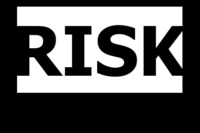 ISHN conducted an exclusive interview with Skipper Kendrick of Kendrick Global Enterprises, who presented a talk at ASSE Safety 2014 on “12 Key Words for the Safety Professional.”
ISHN conducted an exclusive interview with Skipper Kendrick of Kendrick Global Enterprises, who presented a talk at ASSE Safety 2014 on “12 Key Words for the Safety Professional.”
ISHN: Of these 12 key words (see the list at the end of this article), how many of them are safety professionals already aware of and knowledgeable about? Will these words be truly “new” to professionals? Or are they going to be looking at them in a new light?
Skipper Kendrick: There will be absolutely nothing new in these 12. In various conferences, seminars, symposiums, 12 words kept popping up again and again. And they do again in this year’s ASSE conference. If we keep talking about them, what do we do about them? Let’s have a scorecard and an action plan to use them.
Define three of the 12 key words in terms of their importance.
Three critical ones are compliance, business and people. You weave interrelated metrics, systems and risk around these three critical ones. Compliance is a given. The best of the best know compliance is a bare baseline. World class goes way past beyond compliance. Compliance doesn’t address all of our issues, strains and sprains and cuts and lacerations -- no regulations deal with these two areas. You have got to be beyond compliance.
That’s where business comes in. Everyone at this conference is here because they are employed. Without the business there is no ASSE Professional Development Conference. The business is the driver for all we do. Systems are integrated in the business. Everyone’s business has a system. No wonder CEOs look at us strange. “You want another system?” We should truly integrate the safety systems. The word safety will be silent within the business system and will get the job done – keeping people from harm.
I really don’t like the signs that say “Safety First.” If we are truly honest with ourselves, making a dollar is all about profitably and sustainability. Learn how not to hurt people and you’re better off. Take a look at how business is run and integrate safety into. Do not lay safety on top of it. For us as a profession to be successful in the years out we have to take a look at these systems and speak business language as well as if not better than the language of safety. That’s why risk is important.
Last of the three keys is the people component. You can’t do the business without working through the people. You need people to watch the business, maintain it, operate it. All too often people get lost in the numbers. We forget that those numbers have the face of someone’s son or daughter. If we can personalize it, it’s not about OSHA but about seeing your granddaughter blow out her first birthday cake
How does the scorecard work using these key concepts to assess current safety performance?
The scorecard will give you with each word three questions, with possible responses of 1, 3 or 5 based on your organization’s operation. So the total is from 9-60. A 1-15 rating gives you an ad hoc program, you may not know how to spell safety. A score of 15-30 means you have elemental stuff, PPE, you’re just getting into it. Scores of 31-45 suggest you may have some systems going on, repeatability. Scores from 46-60 indicate that you have sustainability. In this upper range folks have processes in place to sustain gains, such as the ability to measure active senior leadership for safety. Could your leaders name the last three things they’ve done to improve the safety of the business? They can talk about profitability and customer satisfaction, why can’t they rattle off three things important to the internal people?
On the back of the scorecard are the actions you can take, such as going to the ASSE body of knowledge, going to PDCs. Get yourself some help, you’ll find these 12 words in the 300 talks at this year’s ASSE meeting.
If all the attendees at your session were to use the scorecard right now to assess their performance, what would be the outcome? Would most “scores” point to average performance, high performance, or would scores range all over the board and be hard to categorize?
I think we would perform from the tools-based to the systems-driven. If you have a safety process, are you talking about it daily or weekly? You’ve probably got leading metrics about the process. You are probably looking at risk rather than just hazards. Everyone has got a JSA, but what’s the risk associated with the hazard? Then you connect to business’s language.
Those in the sustainable level are looking to deal with the human element within these systems, how to deal with human error. You’re doing LOTO, but when it’s not done, what drives the error? The easy action is to blame the employee. Human factors experts show us that when you start looking at this, the person made a choice at that time, a lot times another person would’ve done the same thing. So it’s not an unsafe act, we got a hazard, got a risk. Where are these error precursors, these oops? Next, what can be done to prevent the error? Perhaps there is too much multi-tasking going on. Put in a forcing function to force us to pay attention to the task at hand.
What is the difference between a hazard and a risk?
A hazard is a physical element that could cause harm. The risk is the potential for occurrence. You’ve got a hazard, you stick your finger in it, maybe you get killed. But if the hazard is first observed and fixed, what is the risk?
A cyanide spill can kill you, but what’s the risk of that happening? Say 200 people tramp through the spill at quitting time -- you’ve got 200 exposed instead of one.
We do a great job of defining hazards, but what hazard do I address first? You need to know the risk potential. Sometimes the risk makes you stop the line, other times you find and fix the hazard fast. Risk is another tool to help us understand where we’re going and not hurt people so we’re safe. I took a JSA elemental risk assessment and put it with my “Oops” rating. If you have a high hazard, high risk, high oops score, you’ve got to pull the plug; it’s not case of if but when. I try to deal with these on risks on a pragmatic basis. You don’t need 20 safety staff people to figure it out, but at least risk gets your thinking in a mindset, a methodology, that gets you in a better place.
We can train professionals, they have the skill set, but we got to work on their mindset.
Skip’s 12 key words:
Compliance
People
Business
Personal
System
Leadership
Risk
Errors
Design
Metrics
Results




